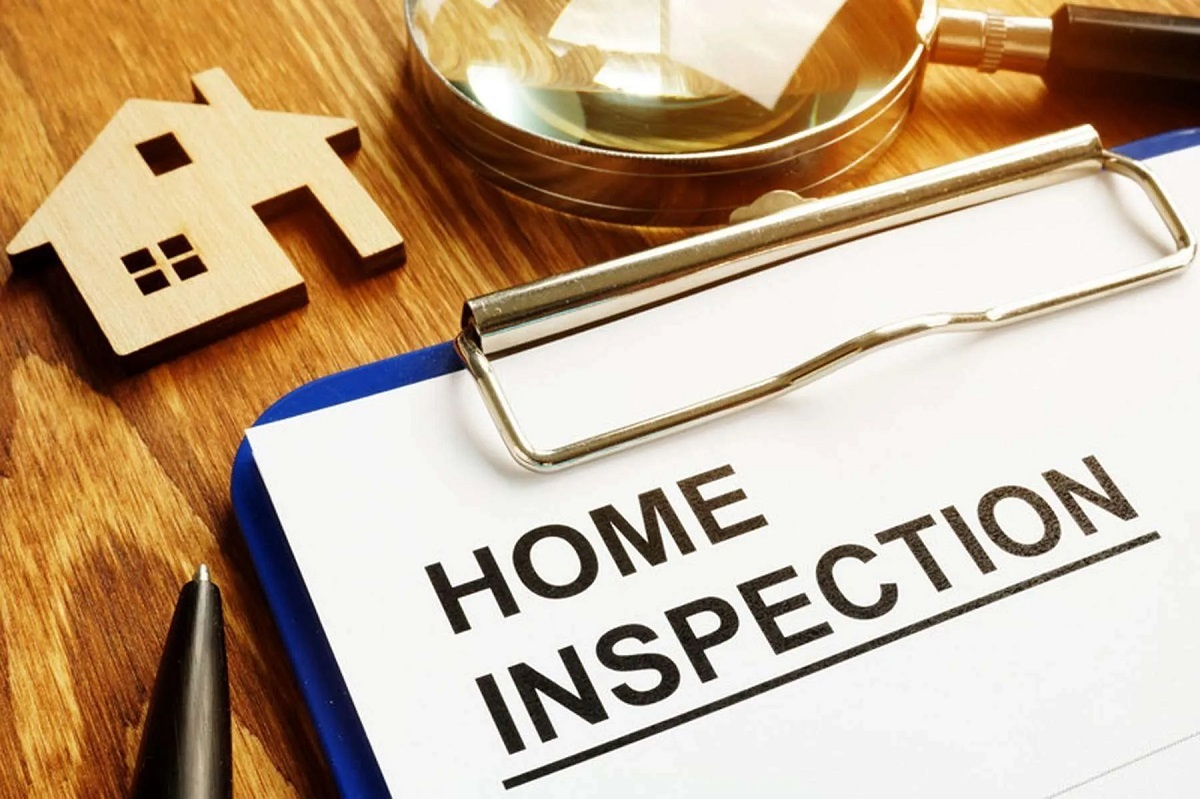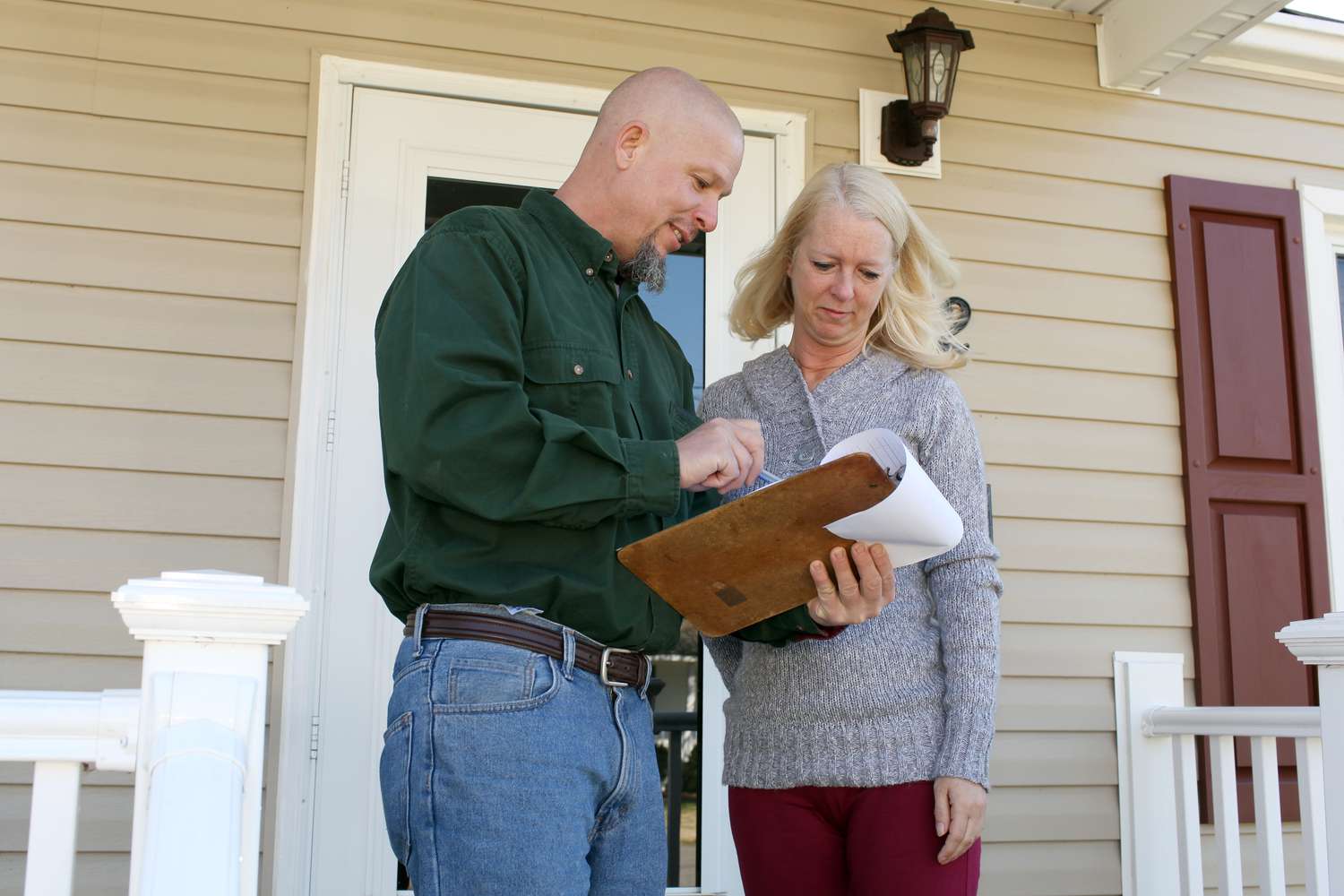Home>Home Maintenance>How Often Do Buyers Back Out After An Inspection?


Home Maintenance
How Often Do Buyers Back Out After An Inspection?
Modified: March 6, 2024
Discover how often buyers back out after a home inspection and learn why home maintenance is crucial to preventing unexpected surprises.
(Many of the links in this article redirect to a specific reviewed product. Your purchase of these products through affiliate links helps to generate commission for Storables.com, at no extra cost. Learn more)
Introduction
Buying a home is a major financial commitment, and a crucial step in the process is the buyer’s inspection. This inspection provides potential buyers with a comprehensive assessment of the property’s condition, allowing them to make an informed decision before finalizing the purchase. However, despite their best intentions, buyers may occasionally back out after an inspection. In this article, we will explore the frequency of buyers backing out after an inspection, the factors that influence this decision, and steps you can take to prevent it from happening.
Understanding the buyer inspection process is important to shed light on why some buyers choose to back out. After a buyer submits an offer and it is accepted, they typically have a contingency period, during which they can arrange for a home inspection. The purpose of this inspection is to identify any significant issues or defects that may impact the property’s value or safety. If the inspection reveals any major problems, buyers may decide to withdraw their offer or negotiate repairs or concessions with the seller.
While every buyer’s situation is unique, there are several factors that commonly influence their decision to back out. The first factor is the severity of the issues discovered during the inspection. If the inspection uncovers major structural problems, significant water damage, or issues with the heating, plumbing, or electrical systems, buyers may feel overwhelmed and choose to walk away. Another influential factor is the cost of necessary repairs or renovations. If the estimated cost of fixing the issues outweighs the buyer’s budget or the potential return on investment, they may decide it’s not worth proceeding with the purchase.
Statistics on buyer backouts after inspections can provide valuable insights into this phenomenon. While exact figures vary, a study conducted by the National Association of Realtors found that approximately 10% of real estate transactions involve buyers backing out after an inspection. However, it’s important to note that this percentage can fluctuate depending on various factors such as the local market conditions, the age of the property, and the buyers’ financial situation.
During home inspections, common issues often come to light. These can include roofing problems, plumbing leaks, electrical wiring issues, HVAC system malfunctions, foundation cracks, mold infestations, and pest infestations. Structural problems, such as foundation issues or termite damage, tend to be major concerns for buyers, as they can be costly to address and compromise the overall integrity of the property. Additionally, health and safety hazards, such as the presence of lead paint or asbestos, can also cause buyers to reconsider their decision to purchase.
Preparing your home for inspection is vital in order to minimize the chances of buyers backing out. Start by conducting your own thorough inspection and addressing any visible issues beforehand. Consider fixing minor repairs, such as leaky faucets or loose doorknobs, as these seemingly small problems can create doubts about the property’s overall maintenance. Ensure that all systems, such as plumbing, electrical, and HVAC, are in good working condition. This proactive approach will help instill confidence in potential buyers and reduce the likelihood of discovering major issues during the inspection process.
Key Takeaways:
- Buyers back out in about 10% of real estate transactions after inspections due to major issues, high repair costs, and financial constraints. Sellers can minimize this by addressing known issues and being transparent.
- Common inspection findings include roofing, plumbing, electrical, and structural issues. Sellers can prepare by conducting pre-listing inspections, completing repairs, and maintaining open communication with buyers.
Understanding the Buyer Inspection Process
The buyer inspection process is a crucial step in the home buying journey. After a buyer’s offer is accepted, they typically have a contingency period during which they can arrange for a professional home inspection. This inspection is designed to assess the condition of the property and identify any potential issues that may impact its value or safety.
Buyers usually hire a licensed home inspector who specializes in examining residential properties. The inspector will thoroughly examine the various components of the home, including the structural integrity, electrical systems, plumbing, HVAC systems, roofing, and more. They will look for any signs of damage, wear and tear, or potential hazards.
During the inspection, buyers are often encouraged to be present so that they can ask questions and gain a better understanding of the home’s condition. The inspector will provide a detailed report highlighting any problems or concerns discovered during the inspection. This report can serve as a valuable tool for buyers in making informed decisions about the property.
It is important to note that the goal of the inspection is not to find every minor flaw or cosmetic issue, but rather to identify significant defects or safety hazards that may affect the value or habitability of the home. Buyers should keep in mind that no home is perfect, and minor maintenance issues can be expected.
Once the inspection report is received, buyers have several options. If the inspection reveals no major issues or concerns, the buyer can proceed with the purchase as planned. However, if significant defects are found, buyers may choose to negotiate repairs or concessions with the seller.
If the inspection uncovers major problems that the buyer is unwilling or unable to address, they may decide to back out of the deal. This is where the buyer’s contingency period comes into play; it allows them to exit the contract and retain their earnest money deposit.
Ultimately, the buyer inspection process is a critical step in ensuring that buyers are fully aware of the condition of the property they are purchasing. It provides them with the opportunity to make informed decisions and negotiate with the seller based on the inspection findings.
Factors That Influence Buyers Backing Out
When it comes to buyers backing out after a home inspection, several factors can play a significant role in their decision-making process. Understanding these factors can help sellers and real estate agents better navigate the negotiation and transaction process.
1. Severity of Issues: The severity of issues found during the home inspection is a primary influence on whether buyers choose to back out. Major structural problems, extensive water damage, or significant issues with electrical, plumbing, or HVAC systems can be overwhelming for buyers. Such issues may lead them to conclude that the property requires more repairs and costs than they are willing to undertake.
2. Cost of Repairs: Another critical factor is the estimated cost of repairs or renovations. Buyers will consider the overall financial impact of addressing the issues revealed during the inspection. If the projected expenses outweigh their budget or the potential return on investment, they may opt to withdraw their offer and find a more suitable property.
3. Timelines and Deadlines: The time constraints associated with the buying process can also influence buyers’ decisions. If the inspection uncovers significant issues close to the closing date, buyers may feel pressured and choose to back out rather than risk buying a property with unresolved concerns. Additionally, if the inspection contingency period is short, buyers may be more prone to backing out to avoid potential risks.
4. Financial Considerations: Buyers’ financial situations and access to funds can impact their decision to back out. If securing financing becomes challenging due to the inspection findings, buyers may be compelled to withdraw their offer. Similarly, if a buyer has limited reserves for unexpected repairs, they may decide to back out rather than face potential financial strain.
5. Emotional Attachment: Emotional attachment or lack thereof can also sway buyers’ decisions. If buyers have not formed a strong connection with the property or if they remain uncertain about moving forward with the purchase, the discovery of significant defects during the inspection can give them a reason to reconsider their commitment.
6. Negotiation Opportunities: The negotiation process following the inspection can either address or exacerbate buyers’ concerns. If sellers are willing to address the identified issues or offer concessions, buyers may be more inclined to stay in the deal. On the other hand, if sellers are unwilling to accommodate repairs or concessions, buyers may see it as a red flag and decide to back out.
7. Competing Offers: In a competitive real estate market, buyers may have multiple offers on different properties. If a more appealing property becomes available during the inspection period, buyers might choose to back out to pursue the other opportunity.
It’s important to note that buyers’ decisions to back out after an inspection can vary based on their individual circumstances and priorities. Sellers and real estate professionals should be prepared to address these factors and work towards solutions that meet the needs of both parties involved.
Statistics on Buyer Backouts After Inspections
Understanding the frequency of buyer backouts after home inspections can provide valuable insights into the real estate market and help manage expectations for sellers and real estate agents. While exact figures may vary depending on various factors, several studies and surveys have shed light on the prevalence of this phenomenon.
According to a study conducted by the National Association of Realtors (NAR), approximately 10% of real estate transactions involve buyers backing out after a home inspection. This percentage may fluctuate based on factors such as the local housing market conditions, the age and condition of the property, and the buyers’ financial situation.
The same study found that the primary reason for buyer backouts after inspections was the discovery of significant defects or issues with the property. The severity and cost of repairs tend to be major factors influencing these decisions. Buyers may be more likely to back out if the inspection reveals structural problems, extensive water damage, or issues with key systems like electrical, plumbing, or HVAC.
An analysis done by Redfin, a national real estate brokerage, indicated that the average rate of buyer termination due to inspection issues was around 19%. However, it’s worth noting that this rate can vary significantly depending on the region and market conditions.
The time at which buyers choose to back out after an inspection is also an important consideration. Some buyers may withdraw their offers shortly after receiving the inspection report, while others may wait until closer to the closing date. Buyers who back out early in the process may be more likely to find another property that better aligns with their needs, whereas those who wait until later in the process may have concerns about the seller’s willingness or ability to address the inspection findings.
It’s important to keep in mind that these statistics are generalizations and may not reflect the specific circumstances of every real estate transaction. Each situation is unique, and there may be cases where buyers choose to proceed with the purchase despite significant inspection issues, or conversely, cases where buyers back out for reasons unrelated to the inspection itself.
For sellers and real estate agents, it is crucial to be prepared for the possibility of a buyer backing out after an inspection. This includes setting realistic expectations, addressing any known issues upfront, and actively engaging in negotiations with prospective buyers to find mutually beneficial solutions.
By understanding the statistics and factors influencing buyer backouts after inspections, sellers and agents can navigate the real estate market more effectively and minimize the potential impact of these occurrences on the overall transaction process.
Common Issues Found During Home Inspections
A home inspection is a crucial step in the home buying process, as it helps identify any potential issues or defects that may exist within the property. While each home inspection is unique and findings can vary, there are several common issues that frequently arise during these inspections. Being aware of these common issues can help buyers, sellers, and real estate agents better navigate the inspection process.
1. Roofing Problems: Issues with the roof are frequently uncovered during home inspections. This can include missing or damaged shingles, leaks, or signs of water damage. Damaged roofs can lead to further issues such as water intrusion or mold growth if left unaddressed.
2. Plumbing Leaks: Leaky pipes, dripping faucets, or inadequate water pressure are common plumbing issues found during inspections. Plumbing problems can cause water damage, increase water bills, and impact the overall functionality of the home’s plumbing system.
3. Electrical Wiring Issues: Faulty or outdated electrical wiring is a safety concern that inspectors often discover. This can include overloaded circuits, improperly installed outlets, or exposed wiring. Electrical issues pose a fire hazard and require prompt attention to ensure the safety of the home’s occupants.
4. HVAC System Malfunctions: Inspections frequently uncover issues with heating, ventilation, and air conditioning (HVAC) systems. This can include faulty thermostats, clogged filters, or inadequate cooling or heating capacity. HVAC problems can impact the comfort, energy efficiency, and indoor air quality of the home.
5. Foundation Cracks: Cracks in the foundation or basement walls can indicate structural issues, such as settling or shifting. Foundation problems can lead to further damage, including uneven floors, cracked walls, or water seepage.
6. Mold Infestations: The presence of mold or mildew in the home can be a health hazard and a sign of moisture or ventilation problems. Mold growth can lead to respiratory issues and damage to the home’s structure if not remedied.
7. Pest Infestations: Inspectors often discover signs of pests, such as termites, rodents, or wood-boring insects. Pest infestations can lead to extensive damage to the home’s structure and require professional treatment to eliminate the problem.
8. Structural Problems: Other structural issues that can be found during inspections include sagging floors, cracks in walls or ceilings, or deteriorating beams. These issues may indicate potential instability or compromised structural integrity.
9. Health and Safety Hazards: Inspections may uncover health and safety hazards, such as the presence of lead-based paint, asbestos, or radon gas. These hazards pose risks to the occupants’ well-being and require specialized attention to ensure their safe removal or mitigation.
It’s important to note that not all homes will have these issues, and the severity of the problems can vary. Additionally, minor cosmetic issues or general wear and tear are also common findings during inspections. The purpose of the inspection is to identify significant issues that may affect the value, safety, or habitability of the home.
For buyers, understanding the common issues found during inspections can help them make informed decisions about the property and negotiate with the seller regarding repairs or concessions. For sellers, addressing known issues before listing the property can help minimize potential problems during the inspection process.
It’s common for buyers to back out after an inspection, especially if major issues are found. Sellers can reduce the likelihood by being transparent about the property’s condition.
Importance of Preparing Your Home for Inspection
Preparing your home for inspection is a crucial step in the home selling process. It can significantly impact the outcome of the inspection and potentially influence a buyer’s decision to proceed with the purchase. Taking the time to properly prepare your home can help ensure a smooth inspection process and increase the likelihood of a successful sale. Here’s why preparing your home for inspection is so important:
1. Make a Positive First Impression: A well-prepared home instantly creates a positive impression on the inspector and potential buyers. It shows that you have taken care of your property and maintained it over time. A clean, organized, and well-maintained home communicates to the inspector that you have respected and cared for your home, potentially leading to a more favorable inspection report.
2. Address Minor Repairs in Advance: Take the opportunity to fix any minor repairs before the inspection. Fixing leaky faucets, replacing burnt-out light bulbs, and repairing loose door handles shows that you are attentive to maintenance and can give buyers confidence in the overall condition of the home.
3. Ensure Accessibility to Key Systems: Inspectors need access to various systems in your home, such as the electrical panel, HVAC unit, and water heater. Make sure these areas are easily accessible by clearing away any clutter or obstacles. Clearing out storage areas, such as attics and crawlspaces, allows inspectors to thoroughly examine these areas and provide a more accurate assessment of the property.
4. Clean and Declutter: A clean and clutter-free home not only makes a positive visual impact but also helps inspectors navigate the property more efficiently. Remove any unnecessary items, clear countertops, and tidy up the outdoor areas. Pay particular attention to areas where inspectors need to access, such as the garage, basement, or crawlspace.
5. Service and Inspect Key Systems Ahead of Time: Consider having your HVAC system, plumbing, and electrical systems serviced and inspected by professionals before the official inspection. This proactive approach allows you to identify and address any potential issues in advance. It demonstrates to buyers that you have taken steps to ensure the proper functioning of essential home systems.
6. Research Local Building Codes and Regulations: Familiarize yourself with local building codes and regulations, especially if you have made any modifications or additions to your property. This knowledge allows you to ensure that your home is compliant with the laws and regulations of your area. If any issues are identified during the inspection, you can be prepared to address them or provide documentation showing compliance.
7. Provide Documentation of Maintenance and Repairs: Keep records of any repairs, maintenance, or renovations you have conducted on your property. This includes invoices, receipts, and warranty information. Providing these records to the inspector can demonstrate your commitment to the upkeep of the home and reassure buyers of the property’s condition.
By taking the time to prepare your home for inspection, you are not only creating a positive impression but also proactively addressing any potential issues. A well-prepared home can inspire confidence in buyers, potentially leading to a smoother negotiation process and an increased likelihood of a successful sale.
Negotiating Repairs and Concessions
During the home buying process, the inspection report often reveals issues that may need to be addressed. In these situations, negotiating repairs and concessions between the buyer and seller becomes an important aspect of the transaction. Understanding how to navigate this process can help ensure a satisfactory outcome for both parties involved. Here are some key points to consider when negotiating repairs and concessions:
1. Review the Inspection Report: Carefully review the inspection report with your real estate agent to gain a clear understanding of the identified issues. Differentiate between major concerns that impact the safety or habitability of the home and minor cosmetic issues. This will help you prioritize your negotiation efforts.
2. Prioritize and Estimate Costs: Prioritize the repairs based on their urgency and potential impact on the property. It can be helpful to obtain estimates from licensed contractors or specialists for the cost of addressing each issue. This will provide clarity during negotiations and help both parties assess the financial aspect of the repairs.
3. Be Realistic and Reasonable: Both buyers and sellers should approach negotiations with a reasonable mindset. Sellers should be prepared to address legitimate concerns raised by the buyer and understand that some repairs may be necessary to proceed with the sale. Likewise, buyers should recognize that not all repair requests may be feasible or financially viable for the seller.
4. Consider Multiple Options: Repairs are not the only option for addressing concerns. Concessions, such as a reduction in the purchase price or seller credits towards closing costs, can be alternative solutions that benefit both parties. Explore different options and find a compromise that works for both the buyer and seller.
5. Seek Professional Advice: Real estate agents play a critical role in negotiations. They have experience in navigating repair requests and can provide valuable guidance on how to approach negotiations. Rely on their expertise to ensure that your interests are represented effectively during the process.
6. Request Multiple Quotes: If repairs are agreed upon, it’s important for both parties to obtain quotes from licensed contractors. Multiple quotes can help ensure fairness in pricing and avoid unnecessary disputes later on. Agree in advance on who will perform and pay for the repairs to avoid any confusion or delays.
7. Put Agreements in Writing: Once repair or concession negotiations are settled, ensure that all agreements are documented in writing. This will help avoid misunderstandings and provide a clear understanding of the terms for both parties. Include details such as the specific repairs to be completed, deadlines, and any financial arrangements related to the repairs or concessions.
8. Follow-Up Inspections: If repairs are agreed upon, consider scheduling a follow-up inspection to verify that the agreed-upon work has been completed to satisfaction. This provides peace of mind to the buyer and ensures that the property is in the desired condition before closing the transaction.
Negotiating repairs and concessions is a crucial part of the home buying process. By approaching these negotiations with transparency, flexibility, and professionalism, both buyers and sellers can reach a mutually satisfactory resolution that allows the transaction to move forward smoothly.
Steps to Prevent Buyers Backing Out After an Inspection
While it is impossible to guarantee that buyers will not back out after a home inspection, there are steps that sellers and real estate agents can take to minimize the likelihood of this happening. By focusing on preparation, communication, and transparency, you can increase buyer confidence and reduce the chances of a buyer backing out after an inspection. Here are some steps to consider:
1. Disclose Known Issues: Prior to listing your home, make sure to disclose any known issues or defects to potential buyers. Being upfront about these issues sets the expectations from the beginning and can help build trust with buyers.
2. Conduct a Pre-Listing Inspection: Consider hiring a professional inspector to conduct a pre-listing inspection. This allows you to identify any underlying problems and address them before putting your home on the market. By proactively fixing issues, you can avoid surprises during the buyer’s inspection and increase buyer confidence in the property.
3. Complete Repairs in Advance: If the pre-listing inspection reveals any significant issues, prioritize and complete necessary repairs before listing your home. This proactive approach demonstrates to potential buyers that you have taken care of the property and are committed to its upkeep, potentially reducing their concerns about the property’s condition.
4. Maintain the Property: Keep up with regular maintenance and ensure that the property is clean and well-presented. This includes taking care of the landscaping, addressing minor repairs, and keeping the home in good overall condition.
5. Provide Documentation: Keep records of any maintenance or repairs conducted on your property. Provide these documents to potential buyers, as they can help build confidence and showcase your commitment to the home’s upkeep and maintenance.
6. Be Transparent During Showings: During property showings, be transparent and open about any defects or known issues. Answer buyers’ questions honestly and provide them with as much information as possible. This level of transparency helps establish trust and reduces the likelihood of unpleasant surprises during the inspection process.
7. Address Buyer Concerns Promptly: If buyers have concerns or questions about the property, respond promptly and address their concerns to the best of your ability. This level of responsiveness demonstrates your commitment to the transaction and can help alleviate any apprehensions buyers may have.
8. Create Realistic Expectations: It’s crucial to set realistic expectations about the condition of the property. Buyers should understand that no home is perfect, and minor issues are common. However, by disclosing known issues and completing necessary repairs in advance, you can build trust and set realistic expectations for potential buyers.
9. Offer Home Warranty Coverage: Consider providing a home warranty to potential buyers. A home warranty can help protect buyers from unexpected repairs and provide them with additional peace of mind about the condition of the property.
10. Work with an Experienced Real Estate Agent: Partnering with an experienced real estate agent who understands the inspection process can be invaluable. They can guide you through the steps to effectively prepare your home for inspection, address buyer concerns, and negotiate repairs or concessions, ultimately reducing the chances of a buyer backing out.
While these steps can help minimize the chances of buyers backing out after an inspection, it’s important to remember that buyers ultimately have the right to make their own decisions based on their assessment of the property. However, by proactively addressing issues, being transparent, and maintaining open lines of communication, you can increase buyer confidence and improve the likelihood of a successful home sale.
Conclusion
The buyer’s inspection is a critical stage in the home buying process, as it provides buyers with valuable information about the condition of a property. While it is not uncommon for buyers to back out after an inspection, taking proactive steps to prevent this can greatly improve the chances of a successful transaction.
By understanding the buyer inspection process, the factors that influence buyers backing out, and the common issues found during home inspections, sellers and real estate agents can better prepare for potential challenges. Preparing the home for inspection, addressing known issues in advance, and maintaining open communication with buyers helps build trust and confidence.
Negotiating repairs and concessions is another essential aspect of the inspection process. Being realistic, fair, and open to finding solutions can result in a mutually satisfactory agreement that meets the needs of both the buyer and seller.
Finally, taking steps to prevent buyers from backing out after an inspection involves being proactive, transparent, and communicative. By disclosing known issues, completing repairs in advance, maintaining the property, and providing documentation, sellers demonstrate their commitment to the home and build buyer confidence.
While it is impossible to eliminate all risks of buyers backing out after an inspection, following these steps can significantly reduce the likelihood. By creating a positive impression, setting realistic expectations, and addressing concerns promptly, sellers can foster a smooth and successful transaction.
In conclusion, the buyer’s inspection is a critical and often nerve-wracking stage of the home buying process. However, sellers and real estate agents can take steps to navigate this process effectively and minimize the chances of buyers backing out. By being proactive, transparent, and responsive, sellers can instill confidence in buyers and increase the likelihood of a successful sale.
Frequently Asked Questions about How Often Do Buyers Back Out After An Inspection?
Was this page helpful?
At Storables.com, we guarantee accurate and reliable information. Our content, validated by Expert Board Contributors, is crafted following stringent Editorial Policies. We're committed to providing you with well-researched, expert-backed insights for all your informational needs.















0 thoughts on “How Often Do Buyers Back Out After An Inspection?”